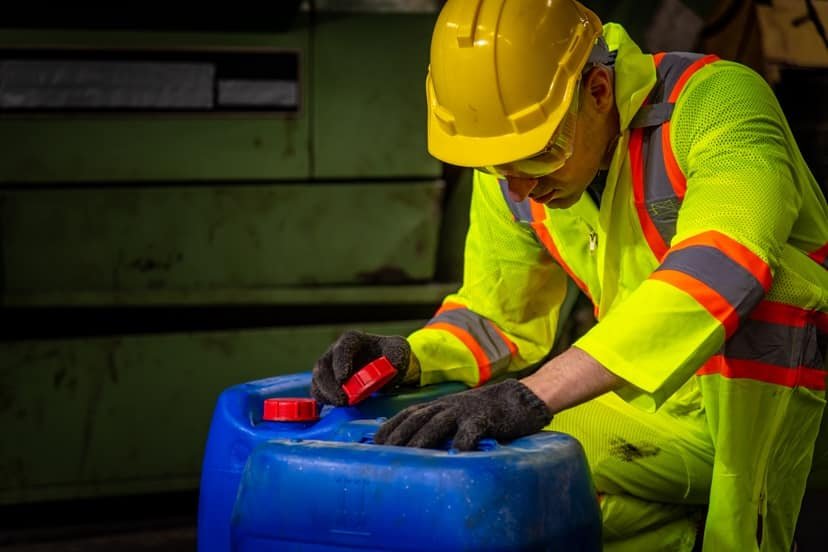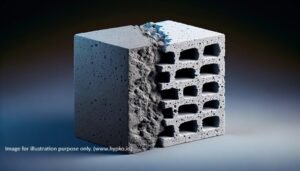Table of Contents
Concrete hardeners play a pivotal role in enhancing the durability and strength of various construction materials, with Fly Ash Bricks being a prime example. In this comprehensive guide, we delve into the different types of concrete hardeners and highlight their numerous advantages, particularly when applied to Fly Ash Bricks.

Understanding Concrete Hardeners
Liquid Hardeners
Liquid hardeners are a popular choice due to their ease of application. These solutions penetrate the surface of the concrete, creating a chemical reaction that strengthens the material from within. They are often used in industrial settings where efficiency is paramount.
Powdered Hardeners
Powdered hardeners, on the other hand, are a versatile option suitable for various construction projects. They consist of finely ground particles that react with the concrete to form a hardened surface. Powdered hardeners offer excellent durability and resistance to wear and tear.
Siliconate Hardeners
Siliconate hardeners are renowned for their ability to penetrate deeply into the concrete, creating a strong bond that enhances surface hardness. This type of hardener is particularly effective in creating a dust-free surface, making it ideal for applications where cleanliness is crucial.
Advantages of Concrete Hardening in Fly Ash Bricks
Fly Ash Bricks are a sustainable and eco-friendly alternative to traditional clay bricks. When combined with concrete hardeners, these bricks gain several advantages that contribute to their widespread use in construction.
Increased Strength
The application of concrete hardeners to Fly Ash Bricks significantly increases their compressive strength. This enhancement ensures that the bricks can withstand heavy loads, making them a reliable choice for various structural elements.
Improved Durability
Fly Ash Bricks treated with concrete hardeners exhibit improved durability against environmental factors such as moisture, UV radiation, and temperature fluctuations. This makes them a resilient option for both indoor and outdoor construction projects.
Enhanced Surface Finish
The use of hardeners on Fly Ash Bricks results in a smooth and aesthetically pleasing surface finish. This not only adds to the visual appeal of the construction but also facilitates easier cleaning and maintenance.
Resistance to Chemicals
Concrete hardeners provide Fly Ash Bricks with increased resistance to chemicals and pollutants. This makes them suitable for applications in industrial environments where exposure to harsh substances is common.
Chemical Reaction in Fly Ash Brick with Concrete Hardener
The application of concrete hardener to Fly Ash Bricks initiates a crucial chemical reaction that transforms the molecular structure of the bricks. This reaction primarily involves the components of the hardener penetrating the porous surface of the bricks, creating a bond at the microscopic level. As a result, a cross-linking network forms within the Fly Ash Bricks, enhancing their overall strength and durability. The chemical transformation not only fortifies the bricks against external stressors but also contributes to their longevity in various construction applications.
Composition Percentage of Fly Ash Bricks with Hardener
Achieving the optimal composition mix ratio percentage is imperative for harnessing the full potential of Fly Ash Bricks when combined with concrete hardener. The recommended mix typically involves precise proportions of fly ash, cement, sand, and aggregate, with the concrete hardener introduced in a carefully measured quantity. While specific ratios may vary based on project requirements, a common mix includes around 50% fly ash, 30% sand, 10% cement, and 10% aggregate, with the hardener added at a ratio of 1-2% by weight of the entire mix. This meticulous composition ensures that the concrete hardener effectively integrates with the other components, contributing to the desired strength, durability, and surface finish of the Fly Ash Bricks.
Application of Concrete Hardeners in Construction
Residential Construction
In residential construction, the use of hardeners on Fly Ash Bricks ensures that homes are built to withstand the test of time. The enhanced strength and durability make these bricks an excellent choice for foundations, walls, and other structural elements.
Commercial Infrastructure
In commercial construction, where the demand for durability is exceptionally high, Fly Ash Bricks treated with concrete hardeners find extensive use. From office buildings to shopping complexes, these enhanced bricks provide a robust and reliable solution.
Infrastructure Projects
Infrastructure projects, such as bridges and roads, benefit from the application of concrete hardeners to Fly Ash Bricks. The increased strength and resistance to environmental factors contribute to the longevity and stability of these critical structures.
Conclusion
In conclusion, the use of concrete hardeners on Fly Ash Bricks proves to be a game-changer in the construction industry. The various types of hardeners available cater to diverse project requirements, providing increased strength, durability, and aesthetic appeal. Whether in residential, commercial, or infrastructure projects, the combination of Fly Ash Bricks and concrete hardeners is a winning formula for a sustainable and robust construction solution.




While making flyash bricks What percentage of flyash is used vibro+hydrolic machines
Use of 50% flyash doesn’t gains the strength.
Hello sir, the percentage of fly ash you are using is correct. 50% fly ash 22% stone dust and 8% cement with additional hardener, seems very good ratio.
May be the pressing of the hydraulic has reduced and the material is not getting compressed properly.
If you have any images or videos of the bricks getting cracked, please share it HERE, so that we can understand the issue better.
If i use 50% flyash,8% cement,22% stone dust powder and 20% 6mm to 10mm stone chips ,and 1% liquid hardner ,
The bricks are cracked in horizontal layer
What is the cause
How to improve
I use vibro machine